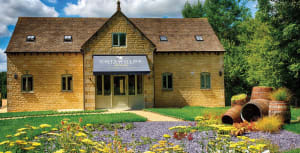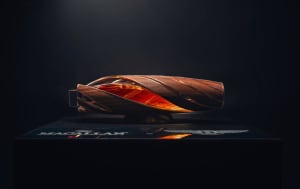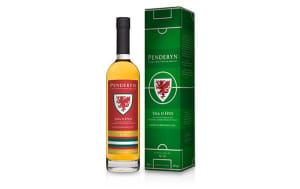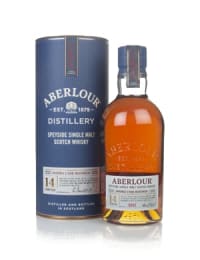What is Burns Night?
Burns Night, also known as Burns Supper or Robert Burns Day, is a celebration of the life and poetry of the Scottish poet Robert Burns, who is widely regarded as the national poet of Scotland. The event is typically held on January 25th, which is the anniversary of Burns' birth in 1759.
During a Burns Night celebration, people gather to enjoy traditional Scottish food, such as haggis, neeps, and tatties (mashed turnips and potatoes), and whisky. The highlight of the evening is the "Address to a Haggis," which is a tribute to the haggis, a traditional Scottish dish made from sheep organs, onions, oats, and other ingredients. The address is traditionally recited by the host or a designated person before the haggis is served.
In addition to the food, many Burns Night celebrations also feature Scottish music and dancing, as well as the recitation of Burns' poetry. Some events also include speeches, toasts, and the presentation of the " Immortal Memory" which is a speech that pays tribute to Burns' life and work.
How is Burns Night Celebrated?
The celebrations usually consist of a traditional Burns Supper, which is a meal that typically includes:
- Haggis: This is a traditional Scottish dish made from sheep organs, onions, oats, and other ingredients. The haggis is usually piped in to the room, accompanied by the playing of bagpipes, before being addressed in Burns' poem "Address to a Haggis".
- Neeps and tatties: This is a Scottish dish made of mashed turnips and potatoes.
- Whisky: A traditional Scottish whisky is often served as a toast to the haggis and throughout the meal.
- Selkirk Grace: Before the meal, a prayer or grace is recited. Often, it's the Selkirk Grace which is a short verse that Burns wrote.
- Music, Poetry and Dancing: Scottish music and dancing are often featured at Burns Night celebrations, as well as the recitation of Burns' poetry. Some events also include speeches, toasts, and the presentation of the " Immortal Memory" which is a speech that pays tribute to Burns' life and work.
- The Toast to the Lassies: After the haggis is served and the "Address to a Haggis" is recited, a man will give a toast to the women present, often in a humorous and flattering manner. Then a "Reply to the Toast to the Lassies" is made by a woman, often witty and rebutting the previous toast.
- The Toast to the Laddies: After the reply, a toast is made to the men present.
Burns Night celebrations vary in size and format, some may be formal and held in a ballroom, others may be more casual and held in someone's home. The celebration also is common in Scottish communities around the world, where local societies often organize formal events.
Who Was Robert Burns?
Robert Burns, also known as Rabbie Burns, was a Scottish poet, lyricist, and lyric poet. He is widely regarded as the national poet of Scotland.
Burns was born in 1759 in Alloway, Scotland, the eldest of seven children in a poor farming family. Despite having little formal education, he began writing poetry at a young age. He wrote in both Scottish dialect and standard English, and his poetry was heavily influenced by traditional Scottish folk songs and culture.
Burns' poetry often dealt with themes of love, nature, politics, and social commentary. His work celebrated the beauty and simplicity of rural life and the common people, while also critiquing the societal ills of his time. He is particularly known for his romantic poetry, such as "A Red, Red Rose" and "Ae Fond Kiss," as well as more humorous pieces, such as "To a Mouse" and "Tam o' Shanter."
Burns' work was well-received during his lifetime and he gained popularity not only in Scotland but also in England and Ireland. He died on July 21, 1796, at the age of 37, but his poetry and writings have continued to be celebrated and studied for more than 200 years.
He also was an advocate for the Scottish people and its culture, helping to revive traditional Scottish songs and ballads. He is also considered a pioneer of the Romantic movement, influencing later poets like William Wordsworth.
Some of his notable achievements include:
- Preservation of Scottish Folk Songs: Burns collected and wrote down many traditional Scottish folk songs, helping to preserve them for future generations. He also wrote new lyrics to existing melodies, which helped to revive interest in the songs and bring them to a wider audience.
- Poetic Voice of the Common People: Burns wrote about the lives and experiences of the common people in Scotland, which helped to raise awareness of the struggles and aspirations of the lower classes. He celebrated the beauty and simplicity of rural life and the folk culture of Scotland in his poetry.
- National Poet of Scotland: Burns is widely considered to be the national poet of Scotland, his work has become an integral part of Scottish culture and identity. His popularity during his lifetime and the continued interest in his work have helped to cement this status.
- Pioneering of the Romantic Movement: Burns was a significant influence on the Romantic movement in literature, which emerged in the late 18th and early 19th centuries. He paved the way for later poets like William Wordsworth, Samuel Taylor Coleridge and others by focusing on emotions and individualism in his poetry.
- His Poetry is still widely read: Burns' poetry and songs continue to be widely read and performed today, with many of them remaining popular over two centuries after his death.
His life was a model of how an individual who came from humble beginnings can rise to great heights. He has been celebrated as an icon of Scottish cultural heritage, and an influence for the sense of national identity and pride in Scotland.
What Whiskies To Drink On Burns Night
Whisky is often served as a toast at Burns Night celebrations, and there are a variety of Scottish whiskies that are well-suited to the occasion. Some of the best whiskies to consider for a Burns Night celebration include:
- Robert Burns Blended Scotch Whisky - the name says it all. Robert Burns is a blended Scotch whisky named after the famous Scottish poet and lyricist Robert Burns. The brand is owned by A. D Rattray and it's blended in small batches using whiskies from various regions of Scotland. The exact composition of the blend is not publicly disclosed, but it is believed to contain a mix of malt and grain whiskies. The exact age of the components is not revealed, but It's described as a smooth, easy-drinking whisky with a light, fruity character and a hint of peat smoke. It is designed to appeal to a wide range of whisky drinkers, and is typically consumed neat, on the rocks, or in cocktails. The brand also have a few different expressions, such as Robert Burns 12 Year Old, Robert Burns 14 Year Old, Robert Burns Hogshead Finish, Robert Burns Peated Finish and other limited edition bottlings.
- Robert Burns Single Malt
- Macallan: This Speyside whisky is known for its rich and complex flavor, with notes of fruit, spice, and oak. It's a great choice for sipping neat or on the rocks.
- Lagavulin: This Islay whisky is known for its smoky and peaty flavor, with notes of iodine and seaweed. It's a great choice for those who enjoy a more robust, full-bodied whisky.
- Talisker: This Skye whisky is known for its smoky and peaty flavor, with notes of pepper and lemon. It's a great choice for those who enjoy a whisky with a strong, bold flavor.
- Glenfiddich: This Speyside whisky is known for its fruit and floral flavors, with notes of apple, pear, and honey. It's a great choice for those who enjoy a lighter, more delicate whisky.
- Oban: This Highland whisky is known for its rich and smooth flavor, with notes of fruit, nuts, and spices. It's a great choice for those who enjoy a well-balanced, versatile whisky.
It's worth noting that, since taste is a personal matter, the above selection is just a reference, it's always good to try different whiskies to find one that suits your taste. It's also worth noting that any Scottish whisky would be a good choice for a Burns Night celebration as long as it is enjoyed by those drinking it.








